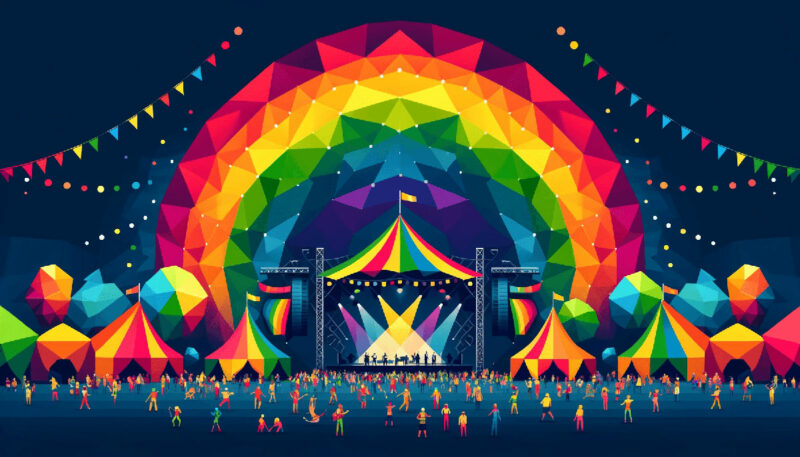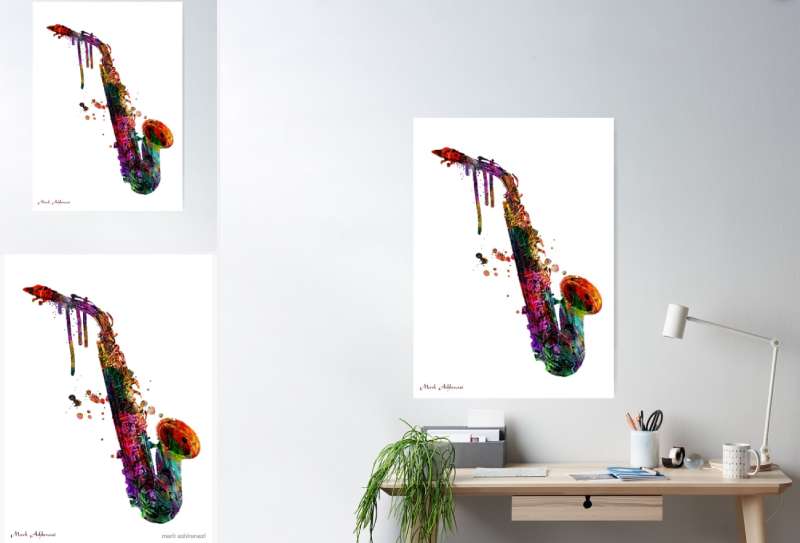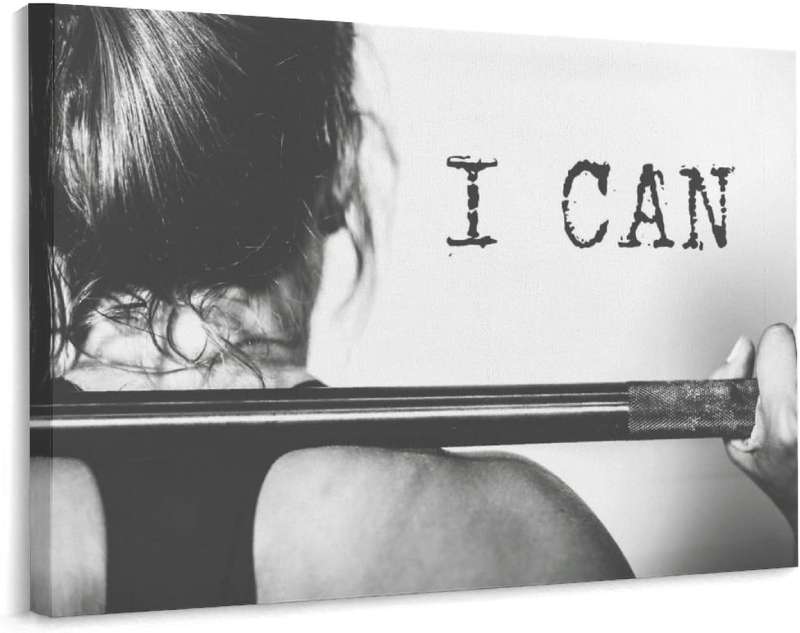Design Dimensions: Understanding Poster Sizes
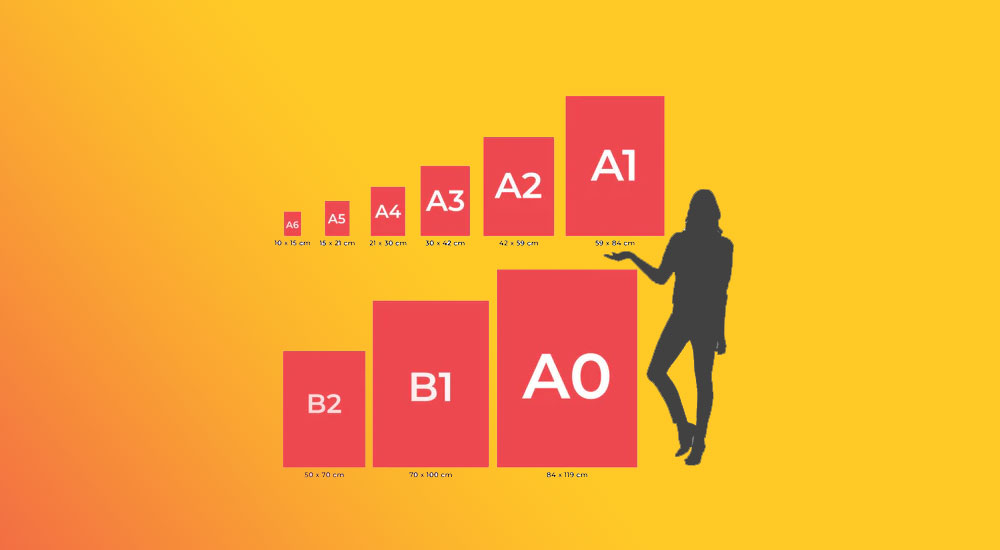
Ever paused, poster in hand, blank wall staring back at you, and thought, “Does size really matter?” It does. The world of poster sizes can be as intricate as choosing the perfect coffee blend in the morning—overwhelming yet crucial.
Here’s the scoop: dive into this article, and you’ll emerge an expert in navigating the vast ocean of dimensions from the classic movie posters to the splashy billboards that make you glance twice.
You’re after a coveted wow-factor, a visual punch that can only be delivered when your message perfectly syncs with its physical messenger—the poster.
Whether it’s cutting-edge large format printing for your next gallery exhibition or the precise custom poster dimensions for that niche conference, understanding the lay of the land is non-negotiable.
By the final period of this read, you’ll effortlessly decode paper size charts, distinguish an A1 from an A2 without breaking a sweat, and speak the language of print resolution with ease.
Let’s unwrap the mysteries behind standard poster dimensions, from pixels to inches, and why mastering this craft is indispensable for any project.
Standard Poster Sizes
Common Sizes in the United States
Let’s talk poster sizes, a crucial part of visual communication. Starting with the US, where everything seems bigger, right? Well, not always.
We’ve got small, medium, and large, each serving its unique purpose.
Small Posters: 11×17 inches
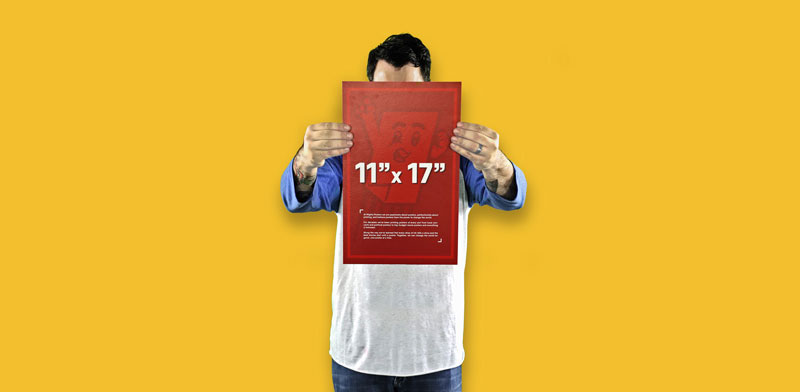
Ideal for close-up views. These are your go-to for personal advertisements or those catchy motivational posters that give you a quick dose of inspiration.
They’re small enough to fit on any wall but big enough to catch the eye. Plus, they’re super handy for those tight spaces in a cozy café or a bustling office board.
Medium Posters: 18×24 inches, 24×36 inches
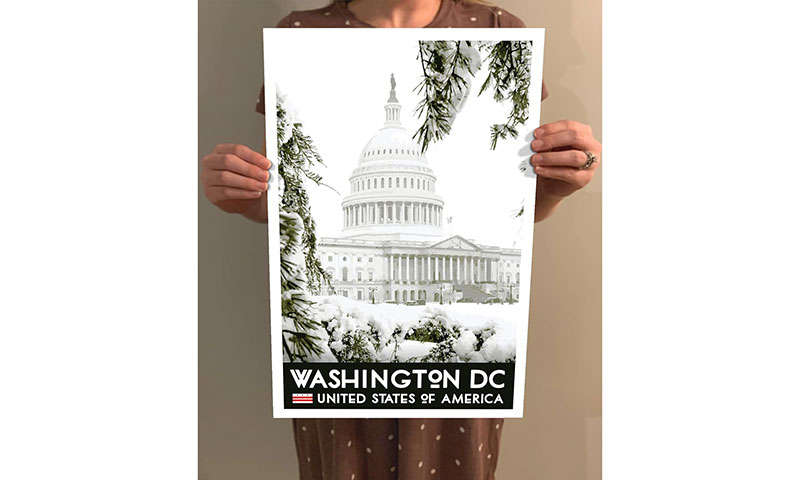
Now, we’re stepping up the game. Medium-sized posters are like the Swiss Army knife of the poster world.
Perfect for a variety of settings – from jazzing up your home decor with vintage film posters to announcing the next big event at your favorite venue.
They’re large enough to be noticed from a distance but still manageable to handle and place around.
Large Posters: 27×40 inches (Standard Movie Poster Size)
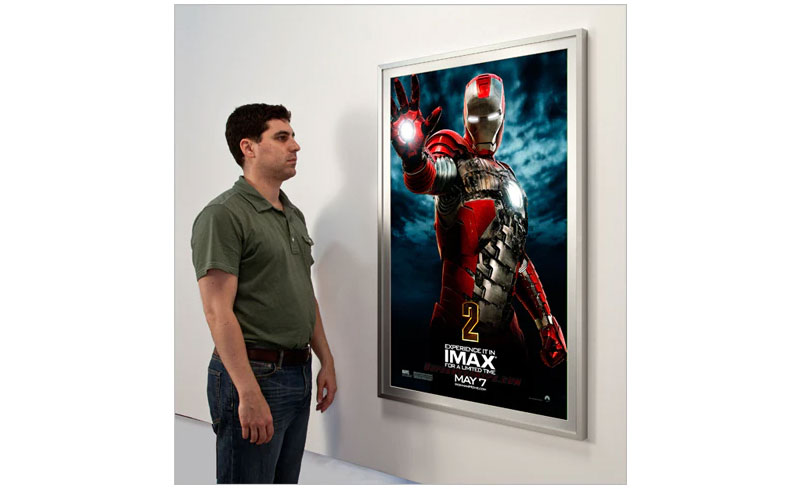
These are the big guns, literally the standard when it comes to movie posters. Ever walked past a movie theater and stopped to admire a thrilling movie poster? That’s the power of a large poster.
They’re perfect for retail stores, outdoor advertising, and of course, trade shows where you need to make a big impact.
Metric and Imperial Size Comparisons In the world of design, dimensions are a universal language. But depending on where you are, the dialect changes.
Metric Sizes: A0 to A10
Metric sizes are like the organized cousin in the family. Ranging from A0 (the biggest) down to A10 (the smallest), these sizes are super standardized.
Think about a sleek art exhibition poster in A1 size, showcasing elegance and simplicity.
Imperial Sizes: 1 Sheet (Double Crown) to 4 Sheet (Double Quad)
Then there are the imperial sizes, with names that sound like they belong to royalty.
From 1 Sheet (also known as Double Crown) to the grand 4 Sheet (Double Quad), these sizes scream grandeur and are all about making a statement.
Imagine a vintage advertising poster in a 4 Sheet size; it’s not just a poster, it’s a piece of art.
Specific Uses for Different Poster Sizes
Small Posters (11×17 inches)
Okay, let’s kick off with small posters. You know, those 11×17 inches ones? They’re like the understated cool kids of the poster world.
Perfect for a quick message, like a flash of inspiration on a motivational poster, or for those commercial ads that need to be clear and to the point.
Personal Advertisements: Small posters are great for personal use. Like, when you’ve got a garage sale or a lost pet (sad, but true).
They’re also handy for small businesses trying to make a mark without overwhelming their space.
Movie Promotions: Think of those indie film promos or short film ads. Small posters are perfect for creating that intimate, artsy vibe.
Medium Posters (18×24 inches and 24×36 inches)
Moving up a notch to medium posters. These guys are versatile, like a good pair of jeans. They fit almost anywhere and serve so many purposes.
Event Venues: Hosting a gig or an art show? A medium-sized poster gives you enough space to be creative yet remains easy to spot on a busy bulletin board or the front of a café.
Bulletin Boards: Ideal for community centers or school boards. They’re big enough to catch your eye but won’t hog all the space.
Home Decor: Ever thought of using a vintage travel poster as a statement piece in your living room? Medium posters can really spice up a room.
Large Posters (24×36 inches and 27×40 inches)
Now, the big league: large posters. These are your attention-grabbers, the ones that make you stop and stare.
Retail Stores: When you’re walking through a mall, these large posters are what make you go, “Wow, I need that outfit!” They’re all about making a statement and driving sales.
Outdoor Advertising: Think billboards or those massive posters you see at bus stops. They’re designed to be seen from a distance and leave a lasting impression.
Trade Shows: When you’re competing for attention, size matters. Large posters can broadcast your brand across a room filled with potential clients and partners.
Printing Methods and Materials
When we talk about poster sizes, it’s not just the dimensions that count. The way they’re printed and the materials used make a huge difference. Like, seriously, it’s what brings the poster to life!
Inkjet, Digital, and Offset Printing
So, there are a few ways to get your poster from a digital file to something you can hang up.
Inkjet Printing: Think of your home printer but way better. Inkjet is great for small-scale jobs, especially when you’re playing around with different designs or need a few posters for your local event.
Digital Printing: This one’s the go-to for most of us. It’s fast, efficient, and the colors pop. Ideal for those medium-sized posters where you need a sharp, vibrant look.
Offset Printing: Now, this is for the big leagues. When you’re printing a ton of posters, like for a major ad campaign, offset printing is your friend. It’s all about bulk printing with consistent quality.
Paper Options and Lamination
The feel of a poster is just as important as its look. It’s about the touch, the finish, and how it holds up over time.
Text Stock and Cover Stock: These are your basic paper options. Text stock is lighter, like the pages of a book, while cover stock is thicker and sturdier, perfect for a poster that needs to stand the test of time.
Foam Boards and PVC: Want to go beyond paper? Foam boards and PVC give your posters a 3D effect, adding depth and durability. They’re perfect for trade shows or store displays.
Styrene and Vinyl: These materials are all about longevity, especially for outdoor use. They can handle the weather, the sun, and all the elements.
Lamination: This is the final touch. Lamination adds a protective layer to your poster, making it more durable and giving it a professional finish. Whether it’s a glossy look or a matte finish, lamination can totally change the vibe of your poster.
Pop-Up Banners and Special Formats
Alright, let’s shift gears and talk about something really cool in the world of poster sizes – Pop-Up Banners and Special Formats. They’re like the superheroes of the poster world, each with its unique powers and styles.
Range of Sizes for Pop-Up Banners
Pop-Up Banners aren’t just your regular posters; they’re more like your stand-up comics. They… well, pop up, and grab attention in ways flat posters can’t.
- Thin Formats: These are sleek, tall, and a perfect fit for places with limited space. Ideal for a narrow hallway or beside a conference booth.
- Extra Wide Formats: When you’ve got room to spare and a message to shout, go wide. These banners can host larger-than-life images and bold text that you can read from across the room.
Special Formats
Now, for the special agents of the poster world. These aren’t your everyday posters; they’ve got specific missions.
- Bus Shelter, Bus Stop, or Subway Posters: You’ve seen these, right? They’re everywhere in the city, giving you something to look at while waiting for your ride. Big, bold, and impossible to ignore.
- Academic and Research Posters: Picture a science poster at a university conference. It’s all about precision, clarity, and tons of data packed into a readable format. They’re the brainiacs of the poster sizes.
- Vintage Advertising Posters: These are a trip down memory lane. They’re not just posters; they’re pieces of history, telling stories from a time gone by.
Choosing the Right Poster Size
So, you’re ready to pick a poster size. Sounds simple, right? But hey, it’s more than just picking a random number. It’s about finding the perfect fit for your space, your message, and your audience. Let’s break it down.
Factors to Consider
Purpose and Location of the Poster: First up, what’s your poster for?
A concert poster for a music gig needs to scream excitement, while something for a corporate event should whisper professionalism. Location matters too. Indoors, outdoors, busy street, quiet hallway – each spot needs a different approach.
Audience and Visibility: Think about who’s going to see your poster.
If it’s up close and personal, smaller sizes work great. But if you’re trying to catch eyes from a distance, go big or go home.
Customization Options
Sometimes, off-the-shelf poster sizes just don’t cut it. That’s where customization comes in.
Advantages of Custom Sizes: Custom posters let you break free from the standard sizes.
They give you the freedom to fit your poster perfectly into unique spaces. Maybe you have an oddly shaped wall or need something that stands out in a sea of regular posters.
Custom sizes are like getting a tailored suit – made just for you.
FAQ On Poster Sizes
What are the standard poster sizes?
Think of standard poster sizes as your go-to coffee sizes: predictable, accessible.
Generally, you’ll see sizes like 18″ x 24″ for small, 24″ x 36″ for medium, and 27″ x 40″ for those large movie posters. Perfect for framing and easy to find a space for on most walls.
How does poster size affect printing cost?
Bigger posters need more ink, more paper, no rocket science there. Go large, like billboard size, and your wallet feels it.
Stick to A3 or A4 poster sizes, it’s friendlier on the purse. Remember, custom poster dimensions could push the price up, sizing standard keeps costs in check.
Can poster sizes be customized?
Absolutely. It’s like asking if you can have oat milk in your latte – of course, you can.
Custom poster dimensions let you tailor the space you’ve got. Whether it’s a quirky wall art measurement for the living room or an event poster specification, customized is doable but might cost more.
What’s the best resolution for a large poster?
You’d want your poster to pop, right? Aim for a print resolution of at least 300 DPI for clarity. Going big?
Large format printing demands high-res images – no one likes a pixelated mess. Think HD photos, crisp lines, the works!
How do I choose the right poster size for my space?
It’s a vibe thing. Measure your space. Envision the presence you want your poster to have. Small space? A series of A4 prints might jazz it up. Got room to spare? Go for something large, a statement piece. Balance and proportion, key ingredients for visual harmony.
Are the sizes for framed posters different?
Not exactly. But frames—they add inches to your poster’s footprint. Poster frame sizes account for matting too, typically adding about 2 to 4 inches all around. Always check the specs if you’re buying pre-made frames. Custom frames? You’ve got more wiggle room for that perfect fit.
What’s the difference between ISO and US poster sizes?
ISO sizes are like the metric system, calculated, international—think A series paper sizes. US sizes? They’re the rebel cousin, marching to their own beat with sizes like ‘Legal’ or ‘Letter’. Good to know who you’re designing for, helps avoid an awkward fit.
How does print resolution vary by poster size?
Small poster? Resolution can be more forgiving. Go massive, and those dots per inch (DPI) need to step it up; higher print resolution standards keep everything crisp. Think big, think clear, no blurs. Your viewers will thank you when they can see every detail, even from afar.
What is the most popular poster size for events?
Fashionable, functional, and frequently found at events, the 24″ x 36″ is your golden ticket. It’s sizable enough to catch the eye but not so huge that it’s hogging space. This size fits well in both indoor and outdoor venues, a real crowd-pleaser.
How should I determine the poster size for my marketing?
Marketing is like storytelling, and size sets the tone. A small, catchy A3 poster works wonders in a cozy café corner. If you’re hitting the streets, aim for the skies—think visual displays that grab attention. Know your audience, their hangouts, and pick a size that whispers (or screams) to them the right way.
Conclusion
So there you have it. The wide world of poster sizes—from standard dimensions to those pesky custom measurements—it’s a key player in the visual symphony.
Whether it’s for the crisp, professional pitch of an A-series flyer or the splashy allure of full-scale billboard advertising, size is the silent ambassador of your design.
We’ve zipped through the ins, outs, and in-betweens—how print resolution isn’t just a number but the heartthrob of clarity, especially in large format printing. And don’t get me started on the DPI dances for varying scales.
And remember, while the paper size chart is your trusty sidekick, it’s the message that reigns supreme. Make it fit. Make it stick. It’s not just about filling space; it’s about making space tell your story.
So go ahead, wield the power of well-chosen poster dimensions—they’re the unsung hero that could take your project from just alright to out-of-sight.
If you liked this article about poster sizes, you should check out this article about how to make a poster.
There are also similar articles discussing how to make a beer poster, how to create a poster in PowerPoint, how to make a wanted poster, and making a poster in Word.
And let’s not forget about articles on how to make a movie poster, how to hang a poster, how to frame a poster, and how to flatten a poster.
- The Activision Blizzard Logo History, Colors, Font, And Meaning - 29 April 2024
- Rainbow Color Palettes for Joyful Designs - 29 April 2024
- The Bethesda Logo History, Colors, Font, And Meaning - 28 April 2024



